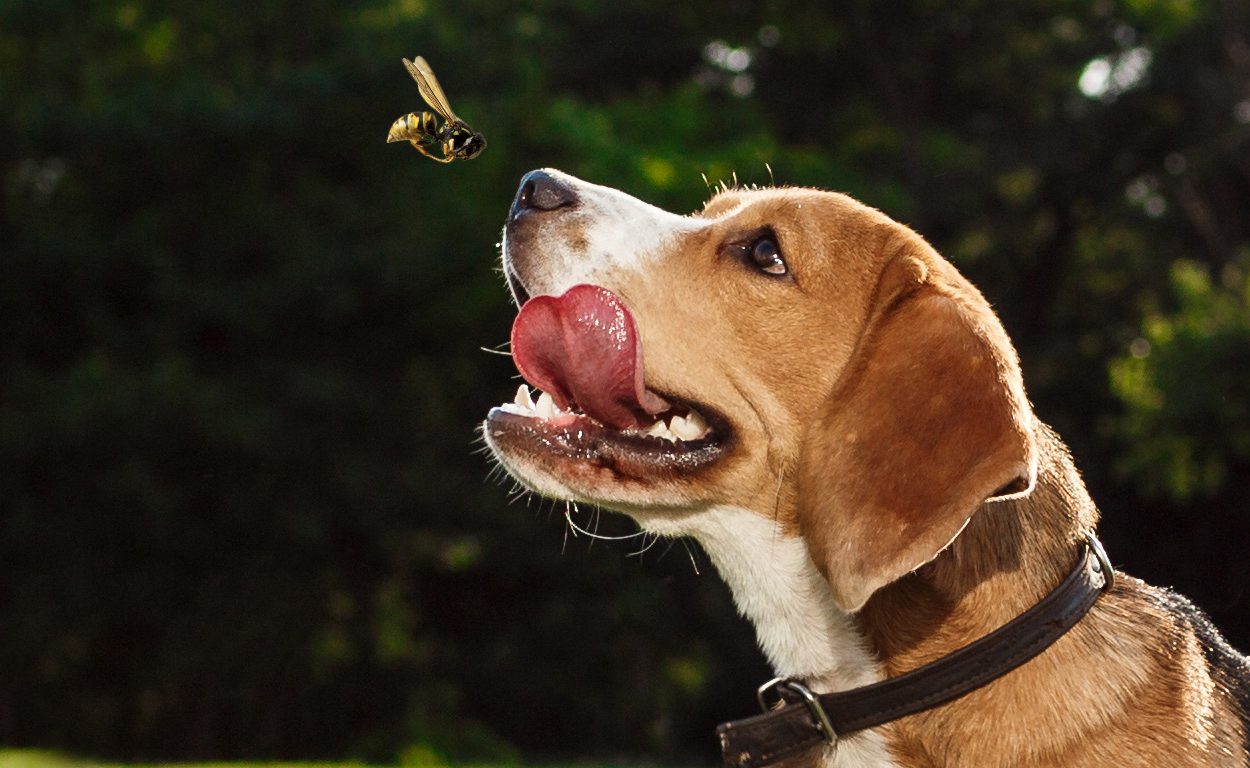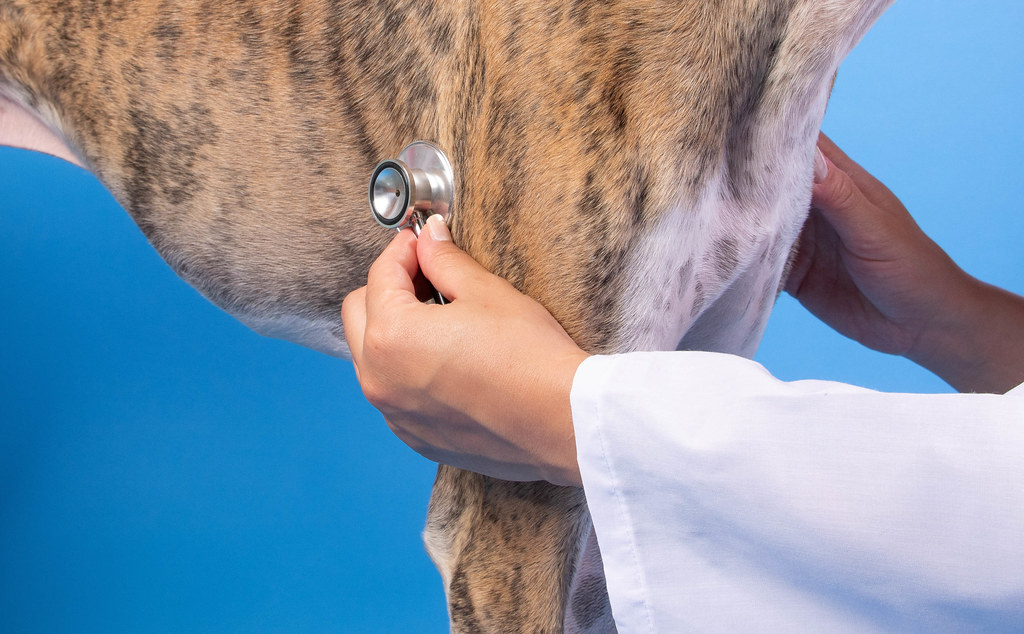Wasp and bee stings in dogs are most common in spring, summer and early autumn months. Most stings can be managed at home, but some cases can be more serious.
When should I contact my vet?
You should contact your vet for urgent advice if:
- You think your dog is having an allergic reaction
- Your dog has been stung in the mouth
- She / he has been stung multiple times
- The swelling has lasted for several days
- You are concerned about your dog’s health
What should I do if my dog is stung?
- If you find a sting left in your dog then it’s important that you take it out. You can do this by scraping the sting away from the skin, just below the venom sac, using something thin and flat, such as a credit card or a long fingernail. Don’t try to pinch the sting out with your fingers, or with tweezers.
- Gently clean the area that’s been stung using soap and cool water. This can help prevent infections and can reduce the risk of further problems.
- Applying ice to the affected area will help, but don’t put ice directly on to your dog’s skin. Use a thin piece of cloth to cover the ice cube.
- To help them, keep yourself calm, and try to distract them with lots of positive attention.
- It’s important that you keep a close eye on him for a few hours just in case he show any signs of an anaphylactic reaction. In very rare cases, allergic reactions can be delayed, so if your dog shows signs of an allergic reaction with 24 hours of being stung it’s still just as important to contact your vet.
Source: www.thekennelclub.org.uk









